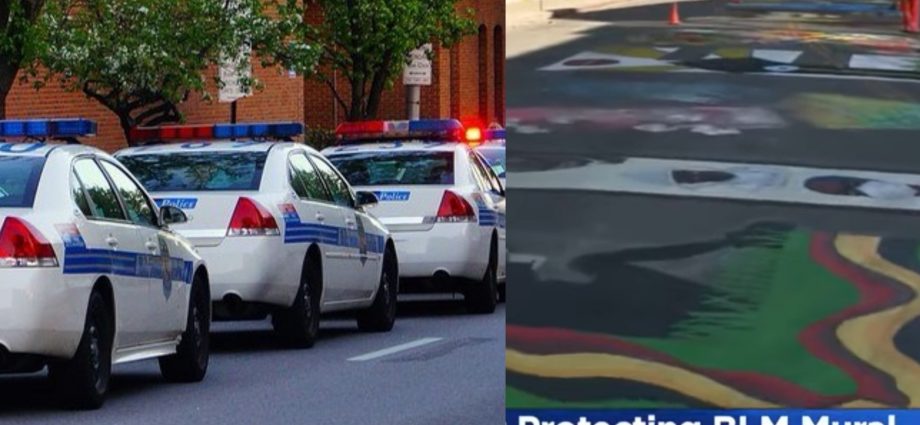Last June, the city of Palo Alto allowed Black Lives Matters activists to paint a mural on the streets. Although it was said that it would be allowed for up to a year, it was reportedly removed last November.
However, many have not forgotten, and at least five police officers claim there was an anti-police sentiment in the mural that was allowed by the local government, which could appear as a major conflict of interest to many since the police themselves are a part of the local government.
What’s more, the task of protecting the municipality sanctioned mural would have theoretically been tasked to protect something that promotes hatred towards, well, themselves. It’s no surprise that these officers have taken a strong stance on the matter.
These five officers are now suing the locality for allowing the mural to be there. The suit was filed on June 4th in Santa Clara County Superior Court, with plaintiffs listed as Eric Figueroa, Michael Foley, Christopher Moore, Robert Parham, and Julie Tannock. Matthew McNicholas, Douglas Winter, and Emily Pincin of McNicholas & McNicholas in Los Angeles makes up the legal team who took up the suit.
In July of 2020, a city spokeswoman claimed that the police had nothing to complain about. Meghan Horrigan-Taylor was quoted as having said that “in no way does the mural take away from the value we have in our police officers who serve our community every day.” She was also the one who said the mural could stay for up to a year, despite reports that it was gone by November.
According to PA Daily Post, City Attorney Molly Stump claims they have not been served with the suit yet, but it can be seen here. The post also reported in part:
The five officers say the mural constitutes discrimination, harassment and retaliation.
In the heat of national protests over the killing of George Floyd in Minneapolis, City Council authorized the painting of the mural at a June 15, 2020 meeting. In the next two weeks, a group of activists painted the 245-foot long mural in the street.
The mural featured several images in each letter of the phrase Black Lives Matter.
The suit points out that in the letter “E” is an image of Joanne Chesimard, better known as Assata Shakur, who was convicted in 1977 for the murder of New Jersey State Trooper Wermer Foerster, a white police officer. Shakur was arrested and convicted of Foerster’s murder. She later escaped from prison and fled to Cuba, where she is believed to still be living.
The suit also points out that the mural included the logo of the New Black Panthers, which is identified by the Southern Poverty Law Center as a hate group that has encouraged violence against whites, Jews and police officers.
“Law enforcement officers, including the plaintiffs, were forced to physically pass and confront the mural and its offensive, discriminatory and harassing iconography every time they entered the Palo Alto Police Department,” said the lawsuit.
The police department is located at 275 Forest Ave., on the opposite side of City Hall from the mural. The two vehicle entrances to the department are in the 600 block of Ramona and Bryant streets, a half block from where the mural had been located.
“Defendants created and allowed to exist the aforementioned discriminatory and harassing work environment,” said the suit. “Not only did the defendants allow the harassing and discriminatory iconography to exist in the workplace, but they also sanctioned, approved, encouraged, and paid for it.”
The suit points out that police officers told “people above them in the chain of command” that the mural violated the state Fair Employment and Housing Act. But the city “ratified the conduct and insisted that it remain and persist.”
The suit claims the mural was a form of discrimination against the five officers based on their race, national origin, and/or color.
In July 2020, the National Police Association demanded the mural’s removal.
The association said it was an “atrocity” to celebrate a fugitive convicted cop killer in front of City Hall.
“For law enforcement required to enter the building, is there any description other than a hostile work environment?” the association said in a statement.
Oakland artist Cece Carpio, who painted the Shakur portion of the mural, said last year it was essential to include the fugitive in the mural because the nation’s “status quo” sees her as a threat to “racial capitalism and white supremacy.”
Time will tell who will win the lawsuit, but the end result could set precedent for other localities and even states, as often judges look at previous cased to determine how to make controversial rulings.

